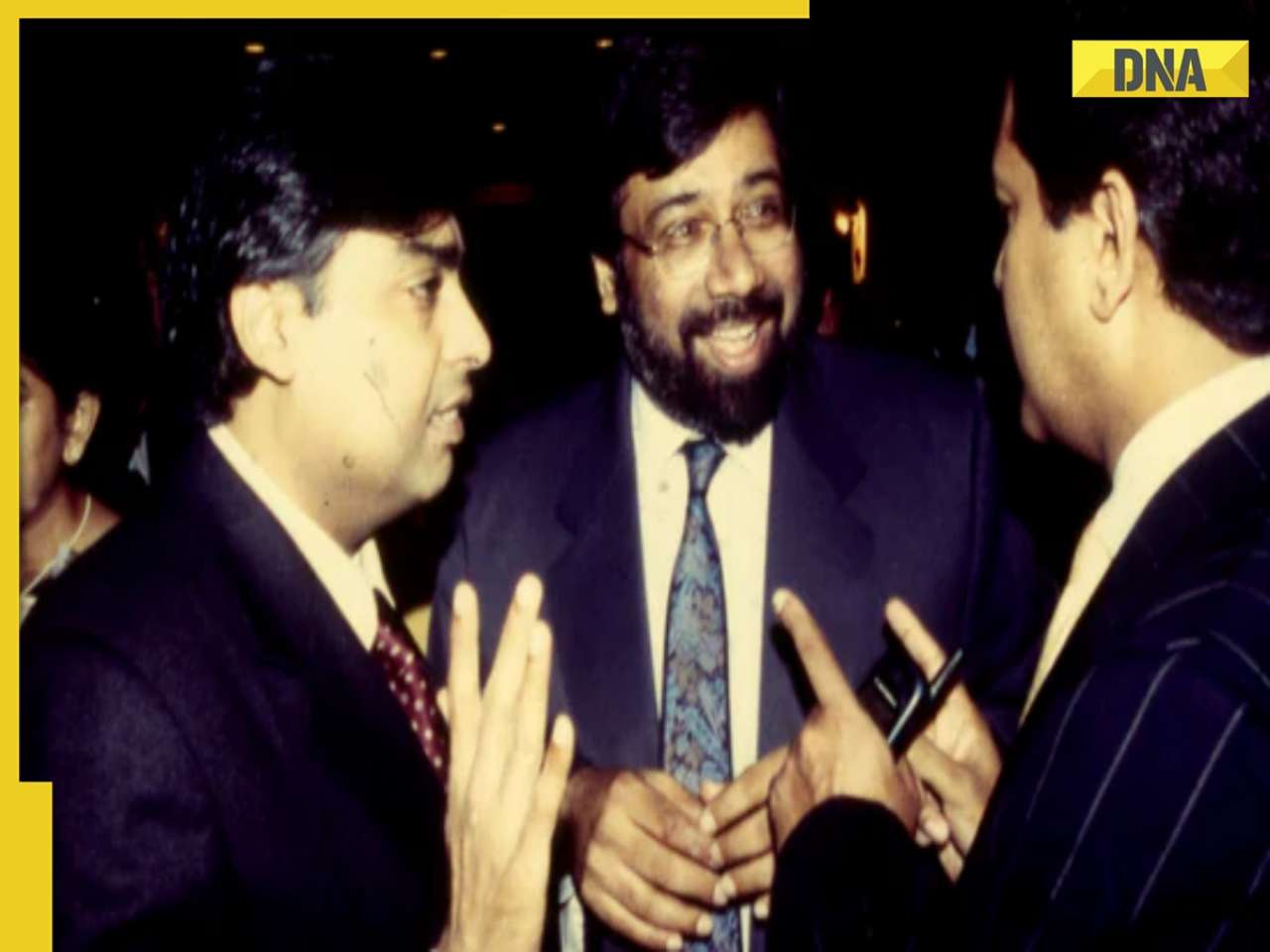The profound impact of Artificial Intelligence (AI) on daily life, with a particular emphasis on an industry often overlooked in this technological revolution—the railroad sector.
The profound impact of Artificial Intelligence (AI) on daily life, with a particular emphasis on an industry often overlooked in this technological revolution—the railroad sector. In this rapidly evolving landscape, railroads have seamlessly integrated AI and Machine Learning into their operations, fundamentally transforming their functionality. Over the years, AI has become an indispensable tool for railroads, playing a pivotal role in averting derailments, ensuring the timely and efficient delivery of freights, predicting and managing freight traffic, boosting productivity, and forecasting wheel wear and tear. This transformative integration has enabled railroads to optimize resources and enhance overall efficiency.
Subhadip Kumar, a seasoned IT professional currently serving as a Technology Specialist and Architect. He completed his Master’s from Western Governors University in Data Analytics. Recognized as an industry leader, Subhadip seamlessly integrates extensive technical expertise with a profound understanding of business operations. His research focuses on the implementation of AI, IoT, and advanced sensors and cameras within the Railroad Industry, reflected in numerous peer-reviewed papers he has published.
“With over 12 years of experience in the railroad industry, I possess an in-depth understanding of its intricate architecture. The railroad encompasses various components, including tracks, locomotives, cars, yards, buildings, and stations. The integration of these elements, coupled with the digitization process and the establishment of an Intelligent Transportation System, presents a formidable challenge. Artificial Intelligence (AI) and Internet of Things (IoT) play pivotal roles in this transformative journey, leveraging advanced sensors and cameras to enhance operational efficiency, safety and intelligence.”, Subhadip shares.
He mentioned “AI has the potential to save lives by preventing tragedies such as the devastating railway accident last year, which claimed the lives of 296 individuals — marking it as one of the most catastrophic rail accidents of the century. AI serves as a valuable complement to human decision- making, acting as a second set of eyes to enhance safety and avert potential accidents.” In his research Subhadip explained some other power of AI such as monitor the health of tunnels, bridges, station, yards, locomotives.
Research
In his research papers, Subhadip underscores the integration of AI and IoT with Digital Twin technology, specifically for applications in Structural Health Monitoring (SHM) and Building Information Modeling (BIM). He introduces a model that employs graph neural networks and spatio-temporal convolutional techniques to optimize and streamline operations in both Intermodal and Hump yards. Utilizing the YOLOv5 model, he demonstrates the capability to detect and classify trucks along with their bounding boxes, contributing to an enhanced traffic overview.
Subhadip’s proposed multi-dimensional and multi-level Digital Twin model encompasses elements, behavior, and rules. This model proves invaluable for monitoring, predicting, and optimizing hump yard operations. It addresses issues such as car damage, predicts inefficiencies and delays caused by weather and external factors, and facilitates crew planning based on these predictions. The comprehensive approach presented in Subhadip's model enhances the overall efficiency and resilience of hump yard operations.
In another research paper, Subhadip delves into the forefront of the rail industry's transformation through Prognostic and Health Management (PHM). He explores how the integration of sensors, real- time monitoring, advanced cameras, and drones can revolutionize performance and safety standards. The paper specifically emphasizes wheel life prediction through the correlation of diverse sensor data with AI. Subhadip’s pioneering research underscores the necessity for advanced methods and tools capable of assimilating varied wheel profile data from sources such as wayside detectors, acoustic detectors, and cold wheel detectors. Leveraging Artificial Intelligence (AI) and telemetry proves pivotal in achieving unprecedented accuracy in predicting wheel life. This predictive capability empowers rail operators to assess remaining wheel health, optimize maintenance schedules, minimize early replacements, reduce stockout costs, streamline inventory, and, critically, enhance safety and reliability. By achieving these milestones, the integration of AI and telemetry not only reduces maintenance spending but also contributes to cost savings, thereby enhancing operating ratios and overall operational efficiency within the rail industry. The implementation of open telemetry, gathering diverse metrics from various sensors and integrating them with operational data, generates both descriptive and predictive analyses through the application of various machine learning models. His research not only help Class I railroads but also regional and short-line railroads.
Conclusion
Subhadip Kumar is acknowledged for his thought leadership and has received invitations to present his papers at numerous conferences, including those organized by IEEE chapters. His commitment is directed towards promoting research in AI for Railroads, considering it as the cornerstone of the nation's supply chain and the most environmentally sustainable mode of transportation. In response to concerns voiced by the Standing Committee about the high operating ratios of Indian Railways, Subhadip advocates for the early adoption of cutting-edge technologies.
His advocacy aligns with the recent initiative by the US Department of Transportation (DOT) in establishing a transportation innovation advisory committee. This committee aims to champion advanced technologies in the railway industry, a cause Subhadip actively supports and contributes to through his groundbreaking work in AI for Railroads.
![submenu-img]() Viral video: Kind man assists duck family in crossing the road, internet lauds him
Viral video: Kind man assists duck family in crossing the road, internet lauds him![submenu-img]() Can you see the Great Wall of China from space? here's the truth
Can you see the Great Wall of China from space? here's the truth![submenu-img]() Ashutosh Rana breaks silence on his deepfake video supporting a political party: 'I would only be answerable to...'
Ashutosh Rana breaks silence on his deepfake video supporting a political party: 'I would only be answerable to...'![submenu-img]() Meet India's most talented superstar, is actor, dancer, stuntman, singer, lyricist; not Ranbir, Shah Rukh, Aamir, Salman
Meet India's most talented superstar, is actor, dancer, stuntman, singer, lyricist; not Ranbir, Shah Rukh, Aamir, Salman![submenu-img]() This flop film was headlined by star kid, marked south actress's Bollywood debut, made in Rs 120 crore, earned just...
This flop film was headlined by star kid, marked south actress's Bollywood debut, made in Rs 120 crore, earned just...![submenu-img]() DNA Verified: Is CAA an anti-Muslim law? Centre terms news report as 'misleading'
DNA Verified: Is CAA an anti-Muslim law? Centre terms news report as 'misleading'![submenu-img]() DNA Verified: Lok Sabha Elections 2024 to be held on April 19? Know truth behind viral message
DNA Verified: Lok Sabha Elections 2024 to be held on April 19? Know truth behind viral message![submenu-img]() DNA Verified: Modi govt giving students free laptops under 'One Student One Laptop' scheme? Know truth here
DNA Verified: Modi govt giving students free laptops under 'One Student One Laptop' scheme? Know truth here![submenu-img]() DNA Verified: Shah Rukh Khan denies reports of his role in release of India's naval officers from Qatar
DNA Verified: Shah Rukh Khan denies reports of his role in release of India's naval officers from Qatar![submenu-img]() DNA Verified: Is govt providing Rs 1.6 lakh benefit to girls under PM Ladli Laxmi Yojana? Know truth
DNA Verified: Is govt providing Rs 1.6 lakh benefit to girls under PM Ladli Laxmi Yojana? Know truth![submenu-img]() Aamir Khan, Naseeruddin Shah, Sonali Bendre celebrate 25 years of Sarfarosh, attend film's special screening
Aamir Khan, Naseeruddin Shah, Sonali Bendre celebrate 25 years of Sarfarosh, attend film's special screening![submenu-img]() Alia Bhatt wears elegant saree made by 163 people over 1965 hours to Met Gala 2024, fans call her ‘princess Jasmine’
Alia Bhatt wears elegant saree made by 163 people over 1965 hours to Met Gala 2024, fans call her ‘princess Jasmine’![submenu-img]() Jr NTR-Lakshmi Pranathi's 13th wedding anniversary: Here's how strangers became soulmates
Jr NTR-Lakshmi Pranathi's 13th wedding anniversary: Here's how strangers became soulmates![submenu-img]() Streaming This Week: Heeramandi, Shaitaan, Manjummel Boys, latest OTT releases to binge-watch
Streaming This Week: Heeramandi, Shaitaan, Manjummel Boys, latest OTT releases to binge-watch![submenu-img]() Remember Ayesha Kapur? Michelle from Black, here's how actress, nutrition coach, entrepreneur looks after 19 years
Remember Ayesha Kapur? Michelle from Black, here's how actress, nutrition coach, entrepreneur looks after 19 years![submenu-img]() Haryana Political Crisis: Will 3 independent MLAs support withdrawal impact the present Nayab Saini led-BJP government?
Haryana Political Crisis: Will 3 independent MLAs support withdrawal impact the present Nayab Saini led-BJP government?![submenu-img]() DNA Explainer: Why Harvey Weinstein's rape conviction was overturned, will beleaguered Hollywood mogul get out of jail?
DNA Explainer: Why Harvey Weinstein's rape conviction was overturned, will beleaguered Hollywood mogul get out of jail?![submenu-img]() What is inheritance tax?
What is inheritance tax?![submenu-img]() DNA Explainer: What is cloud seeding which is blamed for wreaking havoc in Dubai?
DNA Explainer: What is cloud seeding which is blamed for wreaking havoc in Dubai?![submenu-img]() DNA Explainer: What is Israel's Arrow-3 defence system used to intercept Iran's missile attack?
DNA Explainer: What is Israel's Arrow-3 defence system used to intercept Iran's missile attack?![submenu-img]() Ashutosh Rana breaks silence on his deepfake video supporting a political party: 'I would only be answerable to...'
Ashutosh Rana breaks silence on his deepfake video supporting a political party: 'I would only be answerable to...'![submenu-img]() Meet India's most talented superstar, is actor, dancer, stuntman, singer, lyricist; not Ranbir, Shah Rukh, Aamir, Salman
Meet India's most talented superstar, is actor, dancer, stuntman, singer, lyricist; not Ranbir, Shah Rukh, Aamir, Salman![submenu-img]() This flop film was headlined by star kid, marked south actress's Bollywood debut, made in Rs 120 crore, earned just...
This flop film was headlined by star kid, marked south actress's Bollywood debut, made in Rs 120 crore, earned just...![submenu-img]() India's most successful star kid was superstar at 14, daughter of tawaif, affair with married star broke her, died at...
India's most successful star kid was superstar at 14, daughter of tawaif, affair with married star broke her, died at...![submenu-img]() India's biggest flop actor, worked with superstars, married girl half his age, once left Aamir's film midway due to..
India's biggest flop actor, worked with superstars, married girl half his age, once left Aamir's film midway due to..![submenu-img]() England pace legend James Anderson set to retire from Test cricket after talks with Brendon McCullum
England pace legend James Anderson set to retire from Test cricket after talks with Brendon McCullum![submenu-img]() IPL 2024: Shubman Gill, Sai Sudharsan centuries guide Gujarat Titans to 35-run win over Chennai Super Kings
IPL 2024: Shubman Gill, Sai Sudharsan centuries guide Gujarat Titans to 35-run win over Chennai Super Kings![submenu-img]() KKR vs MI IPL 2024: Predicted playing XI, live streaming details, weather and pitch report
KKR vs MI IPL 2024: Predicted playing XI, live streaming details, weather and pitch report![submenu-img]() 'It's ego-driven...': Ex-RCB star on Hardik Pandya's captaincy in IPL 2024
'It's ego-driven...': Ex-RCB star on Hardik Pandya's captaincy in IPL 2024![submenu-img]() BCCI to advertise for Team India's new head coach after T20 World Cup
BCCI to advertise for Team India's new head coach after T20 World Cup![submenu-img]() Viral video: Kind man assists duck family in crossing the road, internet lauds him
Viral video: Kind man assists duck family in crossing the road, internet lauds him![submenu-img]() Can you see the Great Wall of China from space? here's the truth
Can you see the Great Wall of China from space? here's the truth![submenu-img]() Mother bear teaches cubs how to cross a road with caution, video goes viral
Mother bear teaches cubs how to cross a road with caution, video goes viral![submenu-img]() Meet the tawaif, real courtesan of Heeramandi, was once highest paid item girl, was killed by....
Meet the tawaif, real courtesan of Heeramandi, was once highest paid item girl, was killed by....![submenu-img]() Mukesh Ambani’s old image with billionaire friends go viral, Harsh Goenka makes joke of…
Mukesh Ambani’s old image with billionaire friends go viral, Harsh Goenka makes joke of…




































)


















)
)
)
)
)
)